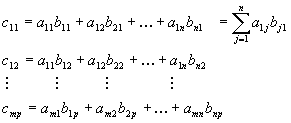
Effective assessment practice
Order Instructions:
Gather various assessment instructions that you or a colleague have used in the classroom or assessment and evaluation tools used in prior courses. Examples include commercially produced unit tests, teacher-created tests, rubrics, and portfolios.
Select three examples that you think represent both effective and ineffective assessment practices.
This is nursing education, you can use whatever examples you want as long as you have at least one example of an ineffective assessment practice and the other two can be effective assessment practices
Justify your analysis and offer suggestions in a 1,050- to 1,400-word paper.
Include a variety of materials including three or more journal articles to substantiate your analysis.
Format your paper consistent with APA guidelines.
SAMPLE ANSWER
Effective assessment practice
Assessment is an integral way that can be utilized by teachers in evaluating growth and the level of knowledge of a student. Assessments are a crucial element of the learning process. In nursing, classroom assessment enables the students to improve their knowledge. Assessment allows the teacher to analyze and gauge how the students are learning and to identify any students who are weak and require remediation. This paper explores different evaluation and assessment tools utilized in prior courses. Moreover, two effective assessment practices and one ineffective assessment practice are selected.
Assessment instructions or assessment/evaluation tools
Portfolios
Portfolios are understood as a collection of evidence for demonstrating attitudes, skills, knowledge, as well as achievements. A portfolio relies on a level of self-regulation, critical reflection, and writing skills on the part of the student; that is, the person who is being assessed. If a portfolio is employed as a tool for assessment, it has to be specific and clear (Green, Wyllie & Jackson, 2013). Nursing is a comparatively late adopter of portfolios considering that portfolios have been utilized in various professional disciplines in universities for several years for the purpose of encouraging reflective practice in students. In nursing, the portfolio could be utilized to assess student growth as well as professional and personal development, which could be assessed over time (Green, Wyllie & Jackson, 2013).
Rubrics
Graduate-level nursing students should have the ability to express concepts in writing as well as verbally. For a lot of learners, this would actually be an accumulative continuing process guided by the educators in every successive class. The instructors need to employ a tool that is capable of consistently evaluating and assessing the work of nursing students, whilst offering feedback. Scoring rubrics, as Truemper (2009) pointed out, do this by way of directing a nursing student towards areas requiring improvement, whilst also giving credit for the items which the nursing student has done correctly. Even though scoring rubrics have mostly be used by undergraduate students, they can greatly improve graduate nursing students’ ability in the areas of verbal and written communication (Truemper, 2009).
Teacher-created tests
These tests can be used by teachers in improving their instruction. Pannoni (2014) reported that educators can create and utilize meaningful assessments to improve their teaching of nursing students. Teachers should first create a blueprint of what they want to test prior to creating the examination. This is important as it would help educators understand the vital information that they have to test which would assist them in making instructional decisions. In addition, the educators should look at test results that would help them identify what the learners have learned and the areas where the students actually need improvements (Pannoni, 2014). Teachers in general never desire to wait until the year’s end when learners are required to do high-stakes tests like graduation examinations in order to find out that the learners did not understood the material. In the long run, this could also save time since the educator will not teach content which learners have mastered already (Pannoni, 2014). Educators need to bear in mind that assessments need to be utilized in measuring student growth and not simply to award another grade. For the educator, the goal must be to move all students forward from where they begin in the class (Pannoni, 2014).
Commercially-produced unit tests
The necessity to pass a commercially-produced standardized test as a requirement for the student to progress in nursing programs is an intensifying and growing trend. Given that the results of the tests could block the student from graduating or could make the student ineligible to take licensing examination for instance NCLEX, commercially-produced unit tests are actually high stakes. It is notable that issues surrounding high-stakes testing have in fact crystallized around licensure examinations predictive testing and the serious results or effects they have on decisions pertaining to student progression (Spurlock, 2009). Test results from commercially-produced unit tests could be helpful in different ways. For instance, they provide nursing students with information with regard to their knowledge relative to other nursing students countrywide using national forms. They also help faculty members to identify the weaknesses and strengths of the curricular (Spurlock, 2009).
Effective and ineffective assessment practices
Effective practices
Portfolio – In nursing education, the portfolio is emerging as an effective and efficient way that is used to evaluate professional development and program outcomes (Ryan, 2011). Electronic or e-portfolios can also be used – this refers to an electronic version of the portfolio. Electronic portfolios are suitable and useful for working with learners, especially when bearing in mind that most students nowadays are technology networked, techno-savvy, and wanting to complete their work exclusively by using computers (Green, Wyllie & Jackson, 2013). Advantages of creating electronic portfolios include personal benefits for instance easier storage, developing technology skills that are suitable for e-learning, increased capability of circulating copies, and encouraging portfolios that are more longitudinal and therefore career growth (Green, Wyllie & Jackson, 2013).
In addition, portfolios are of benefits since they allow a student to be accountable for and take control of their learning. Moreover, they also encourage self-reflection. Even so, issues have been reported such as the time period needed by both the assessor and the student, concerns with regard to confidentiality, the fact that portfolios might favour students who have better reflection and written skills, and confusion regarding the sorts of evidence to be incorporated in the portfolio. On the whole, researchers who have explored the acceptability of portfolios in nursing education have reported positive results (Green, Wyllie & Jackson, 2013). Rubrics: this tool plays a vital part in the broader nursing education teaching-learning process. Rigorous, modifiable rubrics are very important as they truly assess student learning objectives. In essence, they take into consideration learning objectives as well as the learning-teaching process, and support objective grading (Truemper, 2009).
Ineffective practice
Commercially-produced unit tests
Although tests results from commercially-produced unit tests could be of use in different ways, they should not be utilized in predicting NCLEX performance. Spurlock (2006) reported that demanding a fixed score for nursing students in order for them to graduate or to undertake the NCLEX exam in order to make sure that program pass rates remain at the levels set by the state board could really be detrimental to the nursing students who have passed every component of the nursing program successfully. Such learners might have no option except to undertake the exit exam over and over again until they attain the programs designated passing score. Lots of commercially-produced unit tests give individual student scores which are associated with a likelihood of passing the licensure examination NCLEX. Researchers have reported that whilst commercially-produced unit tests in most cases work well in recognizing high-performing learners who may actually pass the licensure examination NCLEX, they are significantly less accurate in recognizing individual learners who would not pass the licensure examination. This distinction in explaining the accurateness of a test is particularly vital when there are policies in place which serve to prevent nursing students’ progression or graduation (Spurlock, 2009). Nursing students who have suffered adverse consequences for failing on their commercially-available unit tests have initiated court proceedings against their nursing programs with the use of various legal bases. Common grounds might be as follows: educational malpractice, lack of due process, and violation of contract. For instance, nursing students have utilized the program handbook or college catalog, which could be seen as a contract between the learner and his or her school, as a crucial part of their legal defense. If the handbook or catalog never included policies regarding commercially-produced unit tests, plus the possible consequences for progressing, Spurlock (2009) stated that the nursing student can claim that the school violated the contract.
Conclusion
In conclusion, assessments are a vital constituent of the learning process in nursing education. The different assessment/evaluation tools that I have used include portfolios, rubrics, commercially-produced unit tests, and teacher-created tests. Out of this, the most effective ones are portfolios and rubrics. Scoring rubrics can really improve graduate nursing students’ ability in the areas of verbal and written communication. Portfolios are vital given that they allow a student to be accountable for and take control of his or her learning. Furthermore, they also encourage self-reflection. Commercially-produced unit tests are ineffective in assessment practice.
Reference
Green, J., Wyllie, A., & Jackson, D. (2013). Electronic portfolios in nursing education: A review of the literature. Nurse Education in Practice, 30(2013): 1-5
Ryan, M. (2011). Evaluating portfolio use as a tool for assessment and professional development in graduate nursing education. Journal of Professional Nursing, 27(2): 84-91
Pannoni, A. (2014). Three ways high school teachers can improve assessments. USNews.
Spurlock, D. R. (2006). Do no harm: Progression policies and high-stakes testing in nursing education. Journal of Nursing Education, 45(8), 297-302.
Truemper, C. M. (2009). Using scoring rubrics to facilitate assessment and evaluation of graduate-level nursing students. J Nurs Educ, 43(12): 562-4 https://www.ncbi.nlm.nih.gov/pubmed/15620071
We can write this or a similar paper for you! Simply fill the order form!












